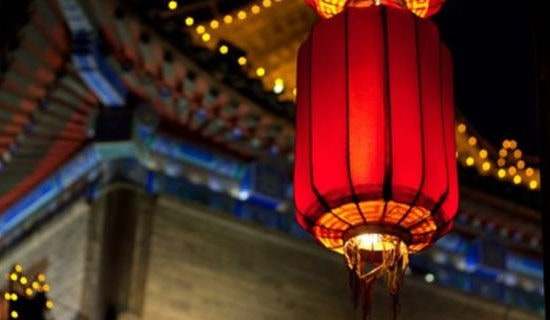春节的专题黑板报
春节的到来是所有人都十分期待的事情。下面就随小编一起去阅读春节的专题黑板报,相信能带给大家启发。

春节的专题黑板报一
春节的专题黑板报二
春节的专题黑板报三
春节食俗的南北差异:
春节是中国较大的节日。作为节庆的传统,年糕与饺子,各占半壁江山。
大抵是南方人习惯吃年糕,北方人更讲究吃饺子。年糕也渗透到北方,但比较单调,只有南方人才能将其做出众多的花样。至于饺子,很明显属于北方的产物,南方也开饺子馆,一般都要打出“北方水饺”的幌子,以示正宗。这犹如某些店铺强调“手工饺子”,与流水线上生产的“机器饺子”相区别。
古典的食物,制作方法愈原始愈好,仿佛这样才能保持原汁原味。
在江南一带,卖年糕,包装纸上也常印有“水磨年糕”的字样。
虽然中国早就大一统,饮食风俗,还是有地域性的。正如“南米北面”、“南糕北饼”、“南甜北咸”之类演绎,说南有年糕、北有饺子,不能算错吧。
尤其过大年之际,它们都是象征意味浓郁的符号化食品,堪称餐桌上的吉祥的经典。即使现有生活条件好了,山珍海味常常喧宾夺主,但因为年糕与饺子对节庆的意义远远大于其滋味,仍无法废黜。想一想,祖宗八代都是借助这古朴的食物过年的,后人也就不太敢或太愿意叛逆了。哪怕在生活的其他方面,皆以“新人类”自命。
估计全家老幼去肯德基、麦当劳吃年夜饭以庆团圆的,应该比较少见。
像年糕、饺子这样的“文化遗产”越多越好,已彻底变成中国人的传家宝,不至于失传的。
年糕的名字起得好,喻示着“年年高升”。似乎多念叨几遍,以诚则灵。不仅听起来顺耳,吃起来,味道也不赖。唇齿之间,能咀嚼出南方稻米天然的醇香。而且因其黏性大,口感独特。
江浙人家,大年三十晚上总要在八仙桌上摆一盘年糕,作为供品。我小时候,经常把蒸熟后又冷透变硬的糖年糕,切成片,放进嘴里,当时香糖来嚼着玩。奶奶说:“小耗子”又在磨牙齿了。甜年糕,以及一种荤油年糕,可当零食吃;做菜,一般选用清水年糕,无色无味的。
吾乡人办酒席,较后和盘托出一道炒年糕,既是下酒菜,又作为主食。用黄芽菜炒,用雪里蕻炒,如果再加上肉丝,更棒了。
上海人把这道菜做到了“顶级”:螃蟹炒年糕。用螃蟹作配料,年糕够荣耀的。螃蟹的鲜香,通过滚烫的汤法,浸透了切成薄片的年糕。有人说:吃螃蟹炒年糕,打你耳光也不会放下。不信试试?
旧日北京春节风俗,也有热气腾腾蒸年糕的,呼应着包饺子,以示米面充足、家有余粮。我想,这作为陪衬的蒸年糕,恐怕是南方人带来的习性。那时候的.北京城,南方人已不少了。他们不会因为饺子而忘掉年糕的。更不会因为来到天子脚下,就忘掉故乡。
北方人,能将饺子捏合得天衣无缝,有款有型,用熨斗熨过一般挺括饺子之吉利,很重要的一方面,是其造型,酷似古代作为“硬通货”的元宝;吃饺子,近似于仪式,象征性地在“招财进宝”。另一方面,借饺子的谐音,取新旧交替、“更岁交子”之寓意。
中国人相信饺子能带来财气,带来好运。如果这算作迷信,也是一种很美好、很积极的迷信。人生甘苦,总应该有一点点精神寄托的,如果它兼而给你带来口腹的享受,倒未必是坏事。人们还将抽签的习俗引进饮食中,包饺子时于馅里埋藏铜钱、银币、宝石、珍珠之类小小的吉祥物,占卜各自的时运。吃饺子的过程,跟抽彩票一样激动。瞧瞧谁能中大奖?更使通俗的饮食多了一份浪漫的憧憬。这才是较好的调味品呢。
在清朝乃至民国,水饺又叫“煮饽饽”。“夏令去,秋季过,年节又要奉婆婆,快包煮饽饽。皮儿薄,馅儿多,婆婆吃了笑呵呵,媳妇费张罗。”这是清代李光庭《乡言解颐》一书中收录的民歌。看来包饺子有助于融合婆媳关系。一笑!
北方还有谚语:“三十晚上吃饺子,没有外人。”以示亲密无间。可见饺子是除夕之夜各家各户庆团圆的必备之物。我的朋友伊沙,写过一篇针对央视春节联欢晚会的“酷评”:《这锅饺子怎么煮》。他把老牌的春节联欢晚会,比喻为一锅“文化饺子”,是否有新意,关键还看包的什么馅儿。
三十晚上北方人不吃饺子,会觉得没有过年的气氛。正如现在许多中国人,假如不看春节联欢晚会,会若有所失。
在节奏慢的时代,全家人围坐一桌包饺子,东聊西扯,是一项很有情趣的集体劳动。包似乎比吃还过瘾。尤其春节,家庭成员悉数在场,其乐融融;谁若缺席,会让大伙儿有“遍插茱萸少一人”的感伤与思念。哥们姐们,新年钟声敲响之前,一定要赶回家里吃一碗饺子哟。这样的习俗很有人情味的。能遵守的话一定要遵守。
关于春节的习俗(英语版):
House Cleaning
房屋打扫
To clean houses on the New Year Eve is a very old custom dating back to thousands of years ago. The dust is traditionally associated with “old” so cleaning their houses and sweeping the dust mean to bid farewell to the “old” and usher in the “new”. Days before the New Year, Chinese families clean their houses, sweeping the floor, washing daily things, cleaning the spider webs and dredging the ditches. People do all these things happily in the hope of a good coming year.
春节打扫房屋这个非常古老的习俗甚至可以追溯到几千年前。灰尘在传统上与“旧”联系在一起,所以打扫房屋和扫除灰尘意味着辞“旧”迎“新”。春节的前几天,中国的各家各户都打扫房屋,扫地,清洗日用品,清除蛛网和疏浚沟渠。人们兴高采烈做所有这些事情,希望来年好运。
House decoration
房屋装饰
One of the house decorations is to post couplets on doors. On the Spring Festival couplets, good wishes are expressed. New Year couplets are usually posted in pairs as even numbers are associated with good luck and auspiciousness in Chinese culture.
房屋装饰之一就是在门上贴对联。在春联上,抒发良好的祝愿。春联通常是成对张贴,因为双数在中国文化中是好运气和吉祥的象征。
People in north China are used to posting paper-cut on their windows. When sticking the window decoration paper-cuts, people paste on the door large red Chinese character “fu”A red "fu"means good luck and fortune, so it is customary to post "fu"on doors or walls on auspicious occasions such as wedding, festivals.
在中国北方,人们习惯于在窗户上贴剪纸。人们既在窗户上贴剪纸,又在大门上贴上大大的红色汉字“福”字,一个红色“福”字意味着好运和财富,因此习惯上在婚礼,节日之类的吉祥场合中,人们都会在门或墙上贴“福”字。
Waiting for the First Bell Ringing of Chinese New Year
等待春节的第一声钟鸣
The first bell ringing is the symbol of Chinese New Year. Chinese people like to go to a large squares where there are huge bells are set up on New Year’s Eve. As the New Year approaches they count down and celebrate together. The people believe that the ringing of huge bell can drive all the bad luck away and bring the fortune to them. In recent years, some people have begun going to mountain temples to wait for the first ringing. Hanshan Temple in Suzhou, is very famous temple for its first ringing of the bell to herald Chinese New Year. Many foreigners now go to Hanshan Temple to celebrate Chinese New Year.
第一次钟声是春节的象征。中国人喜欢到一个大广场,那里有为除夕设置的大钟。随着春节的临近,他们开始倒计数并一起庆祝。人们相信了大钟的撞响可以驱除霉运,带来好运。近年来,有些人开始去山上寺庙等待第一次钟声。苏州的寒山寺就非常著名,它的钟声宣布春节的到来。现在有许多外国人也去寒山寺庆祝春节。
Staying up late ("Shousui")
熬夜(“守岁”)
Shousui means to stay up late or all night on New Year's Eve. After the great dinner, families sit together and chat happily to wait for the New Year’s arrival.
守岁意味着除夕夜不睡觉。年夜饭后,家人聚坐一起,愉快聊天,等待春节的到来。
New Year Feast
年夜饭
Spring Festival is a time for family reunion. The New Year's Feast is "a must" banquet with all the family members getting together. The food eaten on the New Year Eve banquet varies according to regions. In south China, It is customary to eat "niangao" (New Year cake made of glutinous rice flour) because as a homophone, niangao means "higher and higher every year". In the north, a traditional dish for the feast is "Jiaozi" or dumplings shaped like a crescent moon.
春节是与家人团聚的时间。年夜饭是所有家庭成员聚在一起“必须”的宴会。除夕宴会上吃的食物根据不同的地区各不相同。在中国南方,习惯吃“年糕”(糯米粉制成的新年糕点),因为作为一个同音字,年糕意味着“步步高升”。在北方,年夜饭的传统饭是“饺子”或像月牙儿形的汤圆。
Setting Firecrackers
燃放鞭炮
Lighting Firecrackers used to be one of the most important customs in the Spring Festival celebration. However, concerning the danger and the negative noises that lighting firecrackers may bring, the government has banned this practice in many major cities. But people in small towns and rural areas still hold to this traditional celebration. Right as the clock strikes 12 o'clock midnight of New Year's Eve, cities and towns are lit up with the glitter from fireworks, and the sound can be deafening. Families stay up for this joyful moment and kids with firecrackers in one hand and a lighter in another cheerfully light their happiness in this especial occasion, even though they plug their ears.
放鞭炮曾是春节庆祝活动中最重要的习俗之一。然而,担心燃放鞭炮可能会带来危险和烦人的噪音,政府已在许多大城市下令禁止燃放鞭炮。但在小城镇和农村地区的人们仍然坚持这种传统的庆祝活动。除夕夜一旦时钟撞响午夜12点钟,城市和乡镇都被烟花的闪闪光芒映亮,鞭炮声震耳欲聋。一家人熬夜就为这个欢乐的时刻,孩子们一手拿鞭炮,一手拿火机兴高采烈地点放着他们在这个特殊节日的快乐,尽管他们吓得捂着耳朵。
New Year Greetings(Bai Nian)
春节的问候(拜年)
On the first day of the New Year or shortly thereafter, everybody wears new clothes and greets relatives and friends with bows and Gongxi (congratulations), wishing each other good luck, happiness during the new year. In Chinese villages, some villagers may have hundreds of relatives so they have to spend more than two weeks visiting their relatives.
在春节第一天或此后不久,大家都穿着新衣服,带着弓向亲戚和朋友打招呼并恭喜(祝贺),彼此祝愿在新的一年里好运,幸福。在中国农村,有些村民可能有数以百计的亲戚,所以他们不得不拿出两个多星期来走亲访友。
On the first day of the new year, it’s customary for the younger generations to visit the elders, wishing them healthy and longevity.
春节第一天,按习惯,小一辈人要拜见老一辈,祝愿他们健康长寿。
Because visiting relatives and friends takes a lot of time, now, some busy people will send New Year cards to express their good wishes rather than pay a visit personally.
因为探亲访友花费大量时间,所以,现在有些忙碌的人就送春节贺卡来表达他们的良好祝愿,而不是亲自去拜访。
Lucky Money
压岁钱
It is the money given to kids from their parents and grandparents as New Year gift. The money is believed to bring good luck, ward off monsters; hence the name "lucky money". Parents and grandparents first put money in small, especially-made red envelopes and give the red envelopes to their kids after the New Year's Feast or when they come to visit them on the New Year. They choose to put the money in red envelopes because Chinese people think red is a lucky color. They want to give their children both lucky money and lucky color.
这是孩子们的父母和祖父母给他们作为春节礼物的钱。压岁钱据说能带来好运,能驱魔;因此,就有了“压岁钱”的称呼。父母和祖父母先把钱放入特制的小红包里,年夜饭后或当孩子们来拜年时,将红包发给他们。他们之所以要把钱放到红包里,是因为中国人认为红色是个幸运色。他们想给自己孩子既有压岁钱还有幸运色。
【春节的专题黑板报】相关文章:
关于校园安全的专题黑板报02-21
关于新学期的专题黑板报02-17
春节的黑板报11-11
有关春节的黑板报01-12
有关于春节的黑板报11-29
关于元宵春节的黑板报04-01
我们的节日春节黑板报01-12
关于春节黑板报的图片01-12
最新的社区春节黑板报01-12
